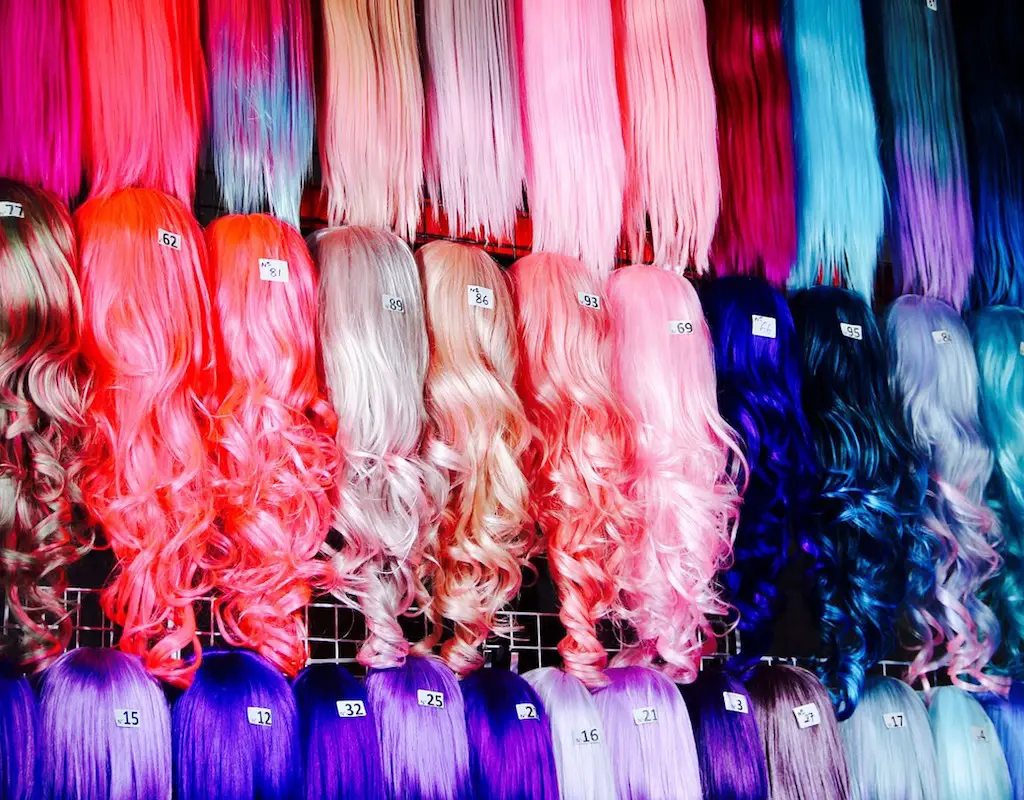ilovemywigs.com is a participant in the Amazon Services LLC Associates Program and other affiliate advertising programs designed to provide a means for us to earn fees by linking to Amazon.com and affiliated sites. Affiliate links may be used on this page and in ilovemywigs.com articles, but they do not impact on the price that you pay and they do help me to get this information to you for free. Read my privacy policy for more information regarding affiliates.
A wig is a head covering which can be made of either real or artificial hair. Materials used can be human hair, animal hair or synthetic fibre. They can be used to conceal hair loss or as a fashionable alternative to styling your own hair. A wig can also act as a protection barrier for hair as it prevents from harmful pollutants and extreme weather from directly interacting with hair which can cause it to become dry and damaged. Alternatively, wigs can be used for religious reasons and are a less expensive option when compared to medical therapies and surgery to restore original hair. There are many different types of wigs and todays blog introduces the main ones.
If you sleep with your wig on, ensure that you are using a silk pillowcase and brush through the tangles gently in the morning. This will prevent damage to the wig and help with longevity of wig use. Remember to consider: do I need a wig cap?
Types of Wigs
If the wig is being worn every day, human hair wigs will wear out in about a year whereas synthetic hair wigs will wear out between 4-6 months. Human hair wigs should be washed every 7-14 days of wear. Synthetic hair wigs can be washed less often. Using the least amount of styling products on the wig will allow you to wash it less often, increasing the life span of the wig. Wearing a wig does not inhibit hair growth as the cells that allow hair to grow will still be able to continue functioning underneath the skin whilst the wig is worn. Nylon netted wig caps are the most favourable to wear under a wig as they allow the hair to breathe which promotes hair growth.
Types of Wigs – Full lace wigs
This type of wig consists of a lace cap which covers the entire head. Human hair is then used and is knotted into the lace patterns of the cap. This type of wig results in a natural finish as it resembles very closely the paths in which hair grows on the human scalp. It is recommended to wear a wig cap whilst using a full lace wig as it covers the entire head. Furthermore, these wigs can be parted anywhere on the head as it is entirely covered. Wearing a cap which closely resembles the colour of your scalp makes it difficult for others to notice that you are wearing a wig. Full lace wigs also tend to last longer than lace front wigs. Strong adhesives are not used when placing these wigs on the scalp which minimises any damage caused to the hair.
Types of Wigs – Lace front wigs
A lace front wig has a small and sheer lace panel across the front of the hairline which is attached to the wig. The strands of hair are sewn into the lace pattern by hand. This allows for a natural looking hairline. It is easy to wear the lace front wig as it is stretchy and covers the entire scalp. It is advisable to use less heavy duty adhesives when applying the lace front wig as otherwise hair loss can occur. The combination of adhesives and tension implemented on the hairline can also cause extensive damage. Often, hairlines can recede as a result of this. It is recommended that a lace front wig is removed after 6 weeks. However, this also depends on the type of adhesive that is utilised. It is advisable to remove the wig before sleeping and place it in a safe, dry place such as a wig stand. This will increase the longevity of the wig. The hair of the wig can brush against the pillow which can cause friction, resulting in split ends, matting and tangling of the hair.
Monofilament Wigs
The part of the monofilament cap wig can be changed. The monofilament refers to the cap that the wig is made of. It allows for the most realistic appearance of both scalp and hair movement possible. The wig is made by tying or sewing the hair into sections in the top portion of the cap which is comprised of monofilament which is a sheer and very fine material. It takes about 40 hours to produce one hand tied monofilament wig. This means that they are more expensive than other wig types. They can be made of both synthetic and human hair.
Human hair compared to Synthetic Hair
The difference between these two types of wigs is down to the fiber that is used. Synthetic wigs can be better at holding the structure that they are styled to even after being washed. Human hair wigs however need to be restyled after they are washed, just like human hair that grows from a scalp. However, many synthetic extensions will melt when they are exposed to heat. 100% human hair wigs require a bit more maintenance. The style is likely to become undone when exposed to any rain or humidity. However, natural hair wigs have a more natural look and styling versatility. Virgin human hair i.e hair that has never been exposed to dye or extreme treatments is the most expensive and sought after.

